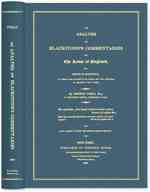Full Description
This book considers the influence and legacies of late nineteenth- and early twentieth-century passing narratives in the work of post-Civil Rights African American women writers. Revisiting the work of Toni Morrison, Alice Walker, Barbara Neely, Dorothy West, and Gloria Naylor, Bradbury argues that the literary and cultural discourse surrounding the passing-for-white act continues to haunt some of the best-known African American women writers of the 1970s, 1980s, and early 1990s. These writers revive the antiquated passing genre of the early twentieth century, summoning its stock characters often in light of, rather than in spite of, the rise of Black cultural nationalism, Black identity politics, and the taboo surrounding the passing-for-white act in order to confront and exorcise the ghosts of passing. By focusing on African American Women writers in particular, this book highlights that these reconfigurations of the conventional passing narrative address and redress sexist and racist discourse surrounding lightness, whiteness, and femininity.
Contents
IntroductionWomen's Writing.- Chapter 1: "Silken Curls," "Ivory Complexions," and "Splendid Forms": Archetypes of Beauty and the Aesthetics of Visibility in Passing Narratives.- Chapter 2: Inspecting Zulena and Reframing Rena: Beauty and Aesthetics in Barbara Neely's Blanche on the Lam (1992) and Blanche Among the Talented Tenth (1994).- Chapter 3: "I Have Sold My Birthright for a Mess of Pottage": Phantom Fathers, Abandoned Mammies, and Tragic Mulattoes in the Passing Genre.- Chapter 4: Questioning "Ex-Colored" Men in Gloria Naylor's Linden Hills (1985) and Dorothy West's The Wedding (1995).- Chapter 5: The Passing Genre and Racial Authenticity.- Chapter 6: Reimagining Irene, Reconsidering Clare: Revisiting Larsen's Passing in Alice Walker's "Source," (1982) and Toni Morrison's "Recitatif" (1983).- Conclusion: Legacies of Passing in Toni Morrison's God Help the Child (2015) and Cynthia Bond's Ruby (2015).








